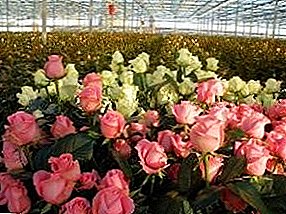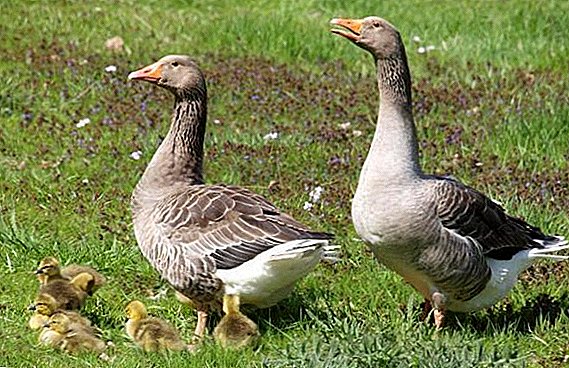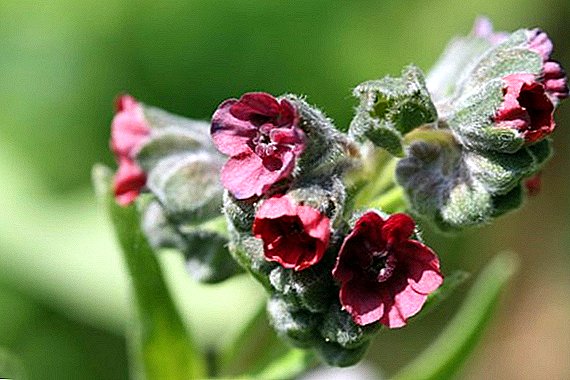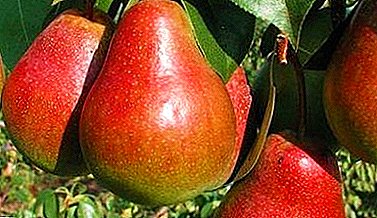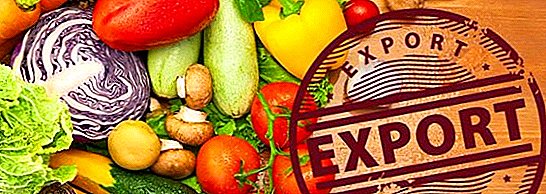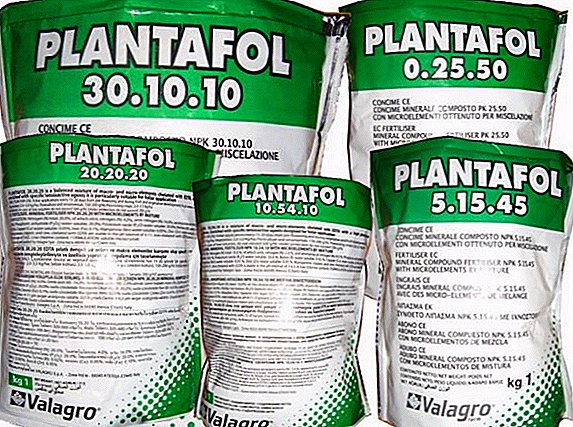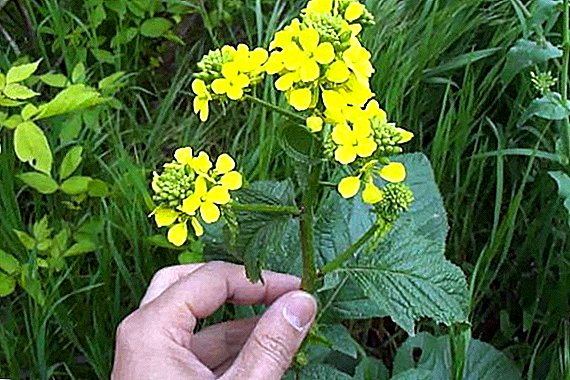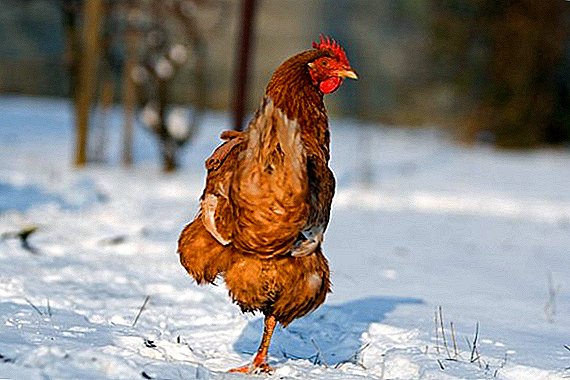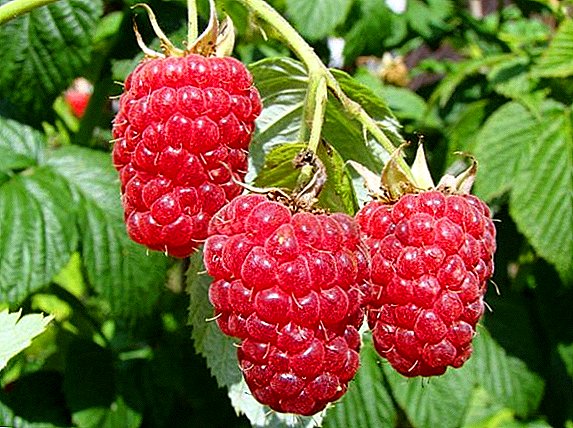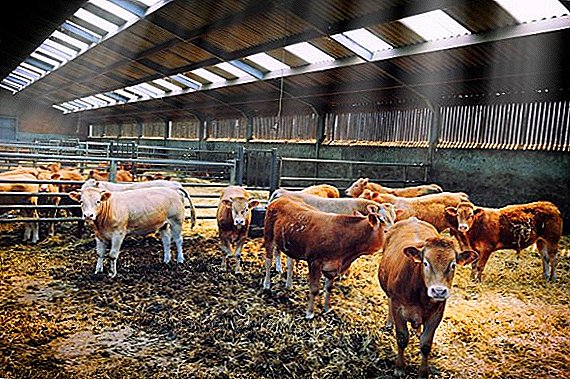 Breeding cattle is a profitable occupation, both on a private farm and on an industrial scale. However, any animal requires care, and large sizes still do not guarantee endurance and vitality. The owner of the cattle requires a variety of knowledge about the intricacies of the content of their wards. This article contains recommendations for newcomers to animal husbandry.
Breeding cattle is a profitable occupation, both on a private farm and on an industrial scale. However, any animal requires care, and large sizes still do not guarantee endurance and vitality. The owner of the cattle requires a variety of knowledge about the intricacies of the content of their wards. This article contains recommendations for newcomers to animal husbandry.
The best breeds for breeding cattle in the private sector
The first task of a novice farmer is to choose a breed of animal, depending on the chosen direction.
On milk
The most common dairy species are as follows:
- Golshtinsky - North American breed, popular on European farms, as well as in private farms of the former Soviet Union. Excellent quality of milk - fat content of 3.7%, protein takes 3.2%, the amount of milk from one individual per year is 6500-7000 kg.

- Jersey - one of the oldest, bred in the UK, easily adapts to any climate. Despite the small yield of milk up to 3300 kg per year, milk is valued for its fat content and sweet taste, it makes the best cream. Milk characteristics - fat content 5.8%, protein 4%, sugar 4.7%.
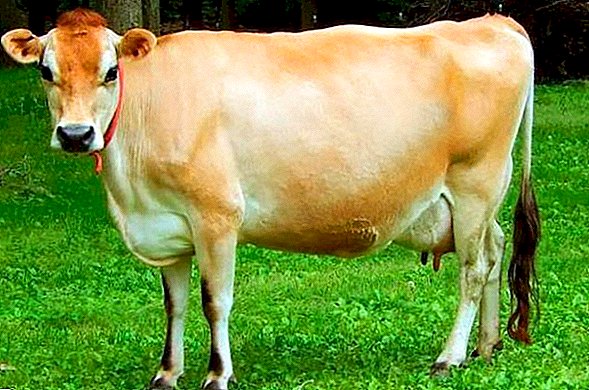
- Simmental - unpretentious breed, ideal for small farms. It is adapted to a temperate climate, does not require a lot of feed. Milk quality - fat content 3.8%, protein 3.3%, sugar 4.8%, milk yield 3500 kg per year.

- Yaroslavskaya - a breed popular in private households, productivity up to 5,000 kg of milk per year, fat percentage 4%, protein 3.5%. Milk is sweet, contains 4.7% sugar.
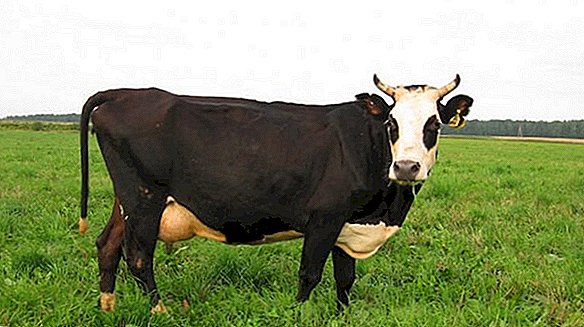
For meat
The following breeds are considered the most productive in the meat direction:
- Hereford - famous for the delicate taste of marbled meat. The weight of the calf at birth is 26-34 kg, the daily weight gain is 700-1200 g, the slaughter age is 18 months. Weight: bull-calves - 850-1000 kg, heifers - 550-650 kg; meat yield 62%.
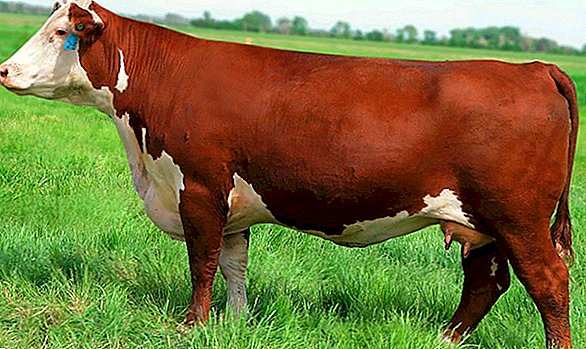
- Belgian Blue Cow - It is considered the most productive, meat can be called dietary due to a small amount of fat. At birth, the weight is about 50 kg, the daily weight gain is up to 1500 g. At 15 months of age, the average bull weight is 1100 kg, and the weight of a calf is 800 kg; meat output at slaughter 80%.
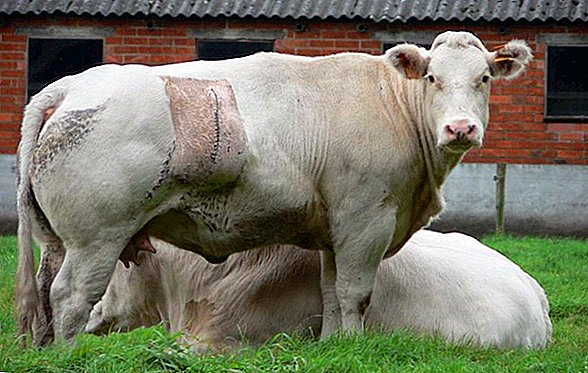
- Kian breed - originally from Italy, it is considered one of the largest. The weight of the calf at birth is 48 kg, the weight gain is up to 1400 g. At 15 months, the weight of the bull is 1300-1600 kg, the cow weighs up to 900 kg; meat yield 65%.

- Auliekol - bred in Kazakhstan, marble meat does not contain much fat. Newborn calves weigh 25 kg, daily weight gain up to 1700 g. At the age of 16-18 months, the bull's weight is 1050 kg, the weight of heifer is 550 kg; meat yield 63%.
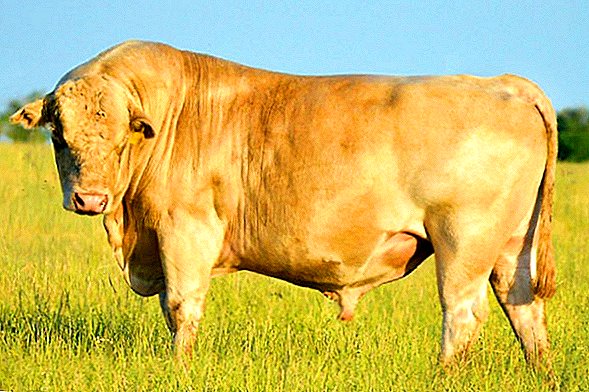
Maintenance and care
Animal productivity depends on the care that the owner takes in caring. The farm begins with the arrangement of the dwelling for the future wards - in it the cows will spend the main part of their life, therefore it is necessary to think carefully about every detail.
We recommend that you consider ways of keeping cows, and also find out the advantages and disadvantages of loose housing for cows.
Optimal parameters and arrangement of the barn
In a small farm, mostly loose housing is used, that is, common feeders and drinkers are installed in the room, as well as pens where the cows will rest. The room is built on the basis of:
- required area for one individual - 6 square meters. m;
- for female with calf - 10 square meters. m
 The floor is covered with a deep layer of straw or straw with peat, the floor itself must have a slope for urine flow. It is advisable to make large windows for natural light and the ability to ventilate the room if necessary.
The floor is covered with a deep layer of straw or straw with peat, the floor itself must have a slope for urine flow. It is advisable to make large windows for natural light and the ability to ventilate the room if necessary.Drinking bowls should be made individually so that animals do not crowd near the water, interfering with each other. In addition, it will prevent mass infection if one of the individuals is sick.
We recommend that you read about how to make drinkers for cows with their own hands.
Feeders can be made independently - most often they are made of wood, because it is durable. The finished trough is burned outside with fire, which gives it strength. Particular attention is paid crate.
It must be performed taking into account the characteristics of the animal - often in narrow cells, cows cling to horns and may be injured. Feeders make two types: for roughage and for green (hay). Install them at a height of about 70 cm from the floor. 
Conditions of detention
In order for the cow not to lose productivity, it needs a certain temperature regime - 10-20 ° C. The room should be insulated for the winter; drafts are excluded. During construction, the ventilation system is installed with dampers and protection from precipitation.
For a successful breeding of cows, comfortable housing conditions are necessary. Learn how to build a barn, as well as how to make a corral and ventilation in the barn with your own hands.
The room should be lit. To provide natural light, windows are made on the south or southeast side. In the winter season, daylight prolonged with the help of artificial lighting.
It is necessary to think of a walking pen near the barn: animals need to walk for at least two hours a day, they do not walk their pets only in severe frost. 
Necessary inventory
After the construction of the barn should take care of the storage room for feed. You cannot keep hay, grain or roots in the barn itself: they feed on the smells of animal waste products, collect moisture and start to deteriorate.
Important! Observance of personal hygiene of the owner and the worker of a farm - the guarantee of health of pets. On shoes or clothes you can bring a lot of pathogenic bacteria, the effects of which are not particularly susceptible to unvaccinated young.
You should also take care of the inventory, which can be useful in working with wards. You will need:
- scales (to control the weight gain of young animals);
- buckets;
- shovel;
- scraper shovel;
- rake;
- forks;
- packaging for products and feed;
- brushes for wards;
- overalls and shoes.

Cleaning and care
So that the udder does not become contaminated, the litter is changed as often as possible, as far as it is contaminated. Every day, cows are brushed and washed with warm water in the area adjacent to the udder. To prevent mastitis in chicks, the bedding is enclosed with a deep, dense layer.
Read about how to choose a good dairy cow, and also find out how and how many times to milk a cow to get high milk yields.
It is necessary to regularly clean the feeders from sticking feed so as not to develop putrefactive bacteria. It is also important to regularly inspect and clean the ventilation pipes so that the dust gathered in them does not penetrate with fresh air.
The floor of excrement and drains are cleaned twice a day, the room should not be saturated with odors. Once a week in the barn they do global cleaning by treating the room with caustic soda or slaked lime. 
Feeding cattle at home
The basis of the cow diet is green fodder, but to ensure full development, you need to know the seasonal differences.
Summer walking in the pasture
Summer maintenance takes place mainly on pasture. For rainy days provide shelter where wards can wait out bad weather. At this time, the basis of nutrition - green herbs, but also can not do without dressing. Burenkam give vegetables and fruits, cereals from the diet or exclude altogether, or reduce to a minimum.
Important! Before grazing on a new pasture, make sure that there are no poisonous grasses for the animal: henbane, St. John's wort, buttercups, and dope.
Winter feeding
Winter meals consist of the following products:
- hay;
- root vegetables, vegetables;
- silage;
- grain mixtures and feed;
- mineral and vitamin complexes.
 As a roughage using oatmeal or barley straw, spring is better. It is advisable to harvest hay from the grass during the period of bud formation, and from cereals during the earing period. When fed by root vegetables or vegetables, they are examined for rot, cleaned. If the product is frozen, it must first be defrosted, otherwise it may cause bloating and indigestion.
As a roughage using oatmeal or barley straw, spring is better. It is advisable to harvest hay from the grass during the period of bud formation, and from cereals during the earing period. When fed by root vegetables or vegetables, they are examined for rot, cleaned. If the product is frozen, it must first be defrosted, otherwise it may cause bloating and indigestion.Read about how to make a diet for dry and milk cows.
As a source of nutrients in the diet add:
- bran;
- cake;
- fodder grain in the crushed look.
Water and salt additives in briquettes
The cows should always have access to fresh water. On average, the daily rate per individual is about 100 liters, the lactating chick drinks even more. In winter, the water should be at room temperature.
Cows must be given salt:
- in winter, 2-3 teaspoons per 5 kg of feed are added to the feed;
- in the summer they take out to pastures in briquettes.
 Salt is needed to improve the digestive processes, it is also the first remedy for gastrointestinal diseases, as well as an important component in the formation of bone tissue of young animals.
Salt is needed to improve the digestive processes, it is also the first remedy for gastrointestinal diseases, as well as an important component in the formation of bone tissue of young animals.Did you know? A cow's nose imprint is as unique as a person's fingerprints. This is used by American farmers when searching for stolen pets.
Vaccination
Vaccinations of the wards will provide them with immunity from many diseases, they begin to be carried out from ten days of age. So, the list of planned vaccinations:
- 10 days - paratyphoid, repeated at 20 days of age;
- 30 days - a complex from infectious viral diseases "Kombovak", repeated after 15 days;
- 50 days - pasteurellosis, repeat after 20 days;
- 77 days - deprive, revaccination after 13 days;
- 100 days - anthrax (once);
- 110 days - leptospirosis, revaccination after 15 days;
- 135 days - emphysematous carbuncle, emkar (once);
- a hundred days before calving - colibacteriosis, repeat after 10 days;
- 80 days before calving - paratyphoid, repeat after 10 days;
- 50 days before calving - Combined vaccine "Kombovak", revaccination after 30 days.
 Even a small farm requires constant attention from the owner. Errors from the side of care or feeding will lead to a decrease in productivity - therefore, when starting an activity, you need to correctly calculate your time and opportunities. However, with proper diligence, the farm quickly pays for the funds invested in it.
Even a small farm requires constant attention from the owner. Errors from the side of care or feeding will lead to a decrease in productivity - therefore, when starting an activity, you need to correctly calculate your time and opportunities. However, with proper diligence, the farm quickly pays for the funds invested in it.









